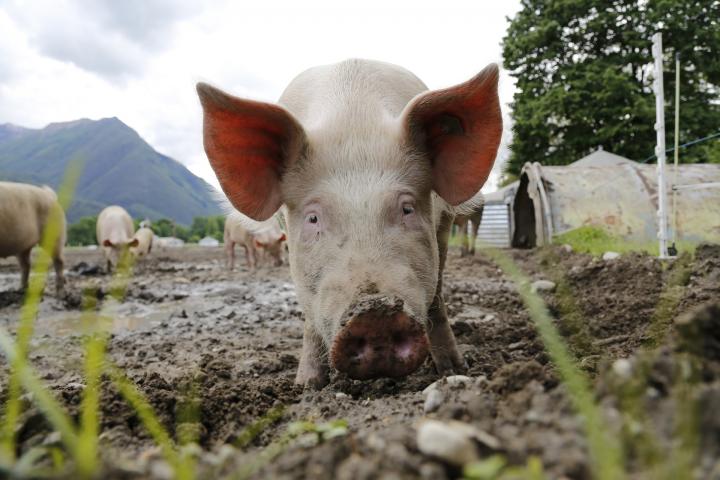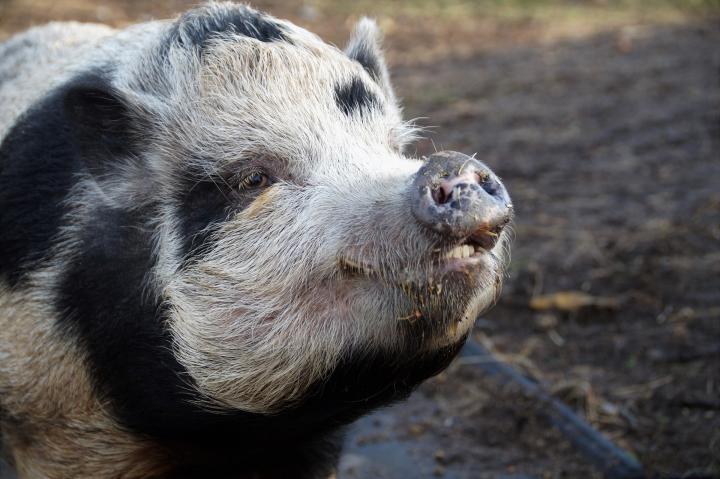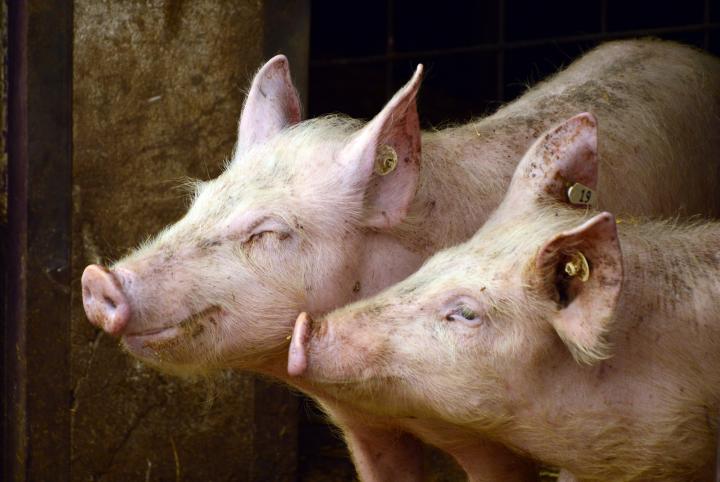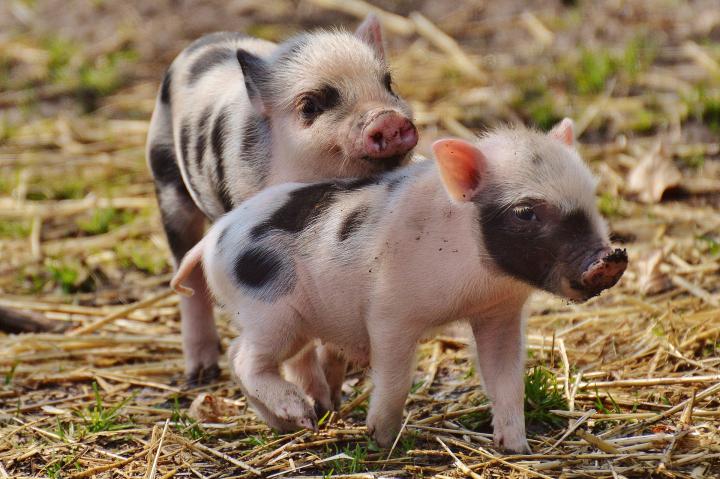Primary Image

Amazing Facts About Pigs
Pig poo smells different than cow poo. You can really tell the difference when driving through pig country in Ohio versus dairy or beef country in other places. Maybe the stomach size or being non-ruminant?
Ineresting article on pigs. Sure am glad I'm vegan!
Interesting article that made me recall some past events. I had an uncle in S. Windham VT who kept a pig and kept feeding it. At processing time he said the pig had a lot of fat, so not all that weight doesn't increase the meat aspect.
I also go to FL and AL winters. IN FL at the Fanning Springs State Park I've seen packs of wild hogs. These wild hogs are in, I learned, 35 states and expanding territory due to weather conditions being favorable. They are highly destructive billion(s) dollar in damaging property. They are MEAN and will attack a person. And as stated in the article, don't stop growing. A young 16 year old boy shot one in TN weighing 600 Lbs. Couldn't get all in the back of a truck. There isn't a closed hunting season for them. Learned the meat tastes very good. Process like a domesticated pig.
Interesting timing, last eve on a TV channel they had a program about wild hogs in TX. One clip showed two galloping horses with their riders and a pack of hogs running behind them. Very quickly the hogs caught up to the horses and ran on by. It's been stated herein they can run at 35 MPH. In the same program they showed a wild hog that weighed over 1000 Lbs and posed with it, it dwarfed the two guys, it was huge. A game warden in a lab was measuring the skull and the tusks for the record books.
In Summerdale AL there's an Alligator Tourist place that has 600 of them. Some hunters trap the hogs and they become feed for the Gaters. I talked with such a hunter, a colored guy, very nice, who had many cage type traps set.
I wonder when the hogs will arrive in the northern states.
Another thing about pigs: THEY NEVER STOP GROWING! A dozen shoats had escaped from someone's farm - we never found out who; we held them for thirty days, and no one ever claimed them, so we sold all but two sows. We sold one of them a year later. We kept the last one for another two years before we put her in the freezer; she weighed over 400 pounds at slaughter, and we got back over 300 pounds of meat! (And it wasn't tough at all; it was some of the best pork we've ever eaten.)
Thank you for adding this wonderful piece about pigs. They are very misunderstood and generally looked down upon. This is well written with truth and care. They are absolutely amazing creatures.
In Europe; Pigs are used to hunt Truffles; a type of edible valuable underground mushroom;
..its nice all informations are great big ideas ..













Comments